Someone smart once said that better safe, than sorry. This is especially true when working with flying metallic debris, bursts of eye-watering brightness, or ultra-high temperatures. A welder deals with all three on a daily. This is why every good welder out there needs effective and properly fitting gloves and helmets.
The aforementioned helmets have light shielding. It is an important feature as it reduces your eyes’ exposure to harmful ultraviolet and infrared rays, which have the potential to cause either temporary or permanent visual impairment. It will also protect your head from flying shrapnel-like pieces when using tools such as angle grinders. The right helmet will do this while also increasing your work rate and the quality of the finished product as you can focus all your attention on getting work done.
There are a lot of options out in the market and looking at all of them individually can be a daunting task. However, that’s why we’re here. To help you shorten your research, we have compiled information on several models. Each one here has its own unique set of qualities. So for your welding pleasure, look no further but at the 8 best welding helmets available.
Top 8 Welding Helmets Of 2020 Reviewed
1. Instapark ADF GX-500S
 Best Welding Helmet For Stick Welding
Best Welding Helmet For Stick Welding
The Instapark ADF GX-500S is quite the looker in the welding helmet department. Unlike most of our other picks, this one comes with a Star-Spangled Banner design which might catch the eye of patriotic welders. This is an auto-darkening helmet with variable shades ranging from #9 to #13 and is powered by solar cell batteries. The switching speed is 1/25000 sec.
The viewing size is quite large at 3.63”X1.65”. You can use this helmet for MIG, Stick welding, and TIG welding. And, in case you’re wondering, this one meets the ANSI Z87.1 standards. The ratcheting headband and padded interior ensure that you’re comfortable no matter how long you wear it. However, unlike some of our other picks, this only has 2 arc sensors though that’s not really surprising at this price point. In addition, the instructions are poorly written which can make it difficult for newbies to use. This is suitable for hobbyists or occasional welders only.
Pros:
- Budget-friendly
- Very comfortable
- Nice design
Cons:
- Not for professional welders
- Poorly written instructions
- Only 2 arc sensors
2. Miller Electric Classic Series 251292
 Best Welding Helmet For Beginners
Best Welding Helmet For Beginners
The Miller Electric Classic is an auto-darkening welding helmet that features dial-operated controls for adjusting sensitivity and delay, a grinding mode, and auto-on/auto-off power control. It comes with 2 AAA batteries, extra lenses, and a magnifying lens holder. The shade ranges from #8 to #12.
However, this unit only comes with 2 arc sensors. The switching speed isn’t the fastest at 1/10,000 sec which makes this unsuitable for professional welders or those who do welding projects that last several hours. And the sensitivity of the sensors is pretty high even at a low setting which gets triggered by sunlight outdoors.
Pros:
- Good beginner helmet
- Trusted brand
- Comes with batteries and extra lenses
Cons:
- Switching speed is at 1/10,000 sec only
- Sensors are very sensitive; not that good for outdoor welding
- Only 2 arc sensors
3. Lincoln Electric Viking 3350
 Best Welding Helmet For Clarity
Best Welding Helmet For Clarity
The Lincoln Electric Viking 3350 is a variable auto-darkening welding helmet with a lens shade ranging between #5 to #13. The viewing size is 3.74″ x 3.34″ and the switching speed is 1/25,000 sec. This welding helmet is powered by solar cell batteries and features ADF control knobs, 4 arc sensors, and a grind mode. Visibility, whether in an active or inactive state, is very clear.
The helmet is lightweight and comfortable. And the headband is easily adjusted to fit whoever needs to use the helmet. However, it is expensive. Reaching into the helmet and switching the grind mode on/off can be a bit challenging with gloves on. In addition, the sensors are a bit too sensitive which makes it hard to use outdoors.
Pros:
- Lightweight
- Comfortable
- Enhanced visibility
Cons:
- Expensive
- Hard to switch to grind mode when using gloves
- Not ideal for outdoor welding
4. Honeywell Pipeliner SuperGlas Plus Welding Helmet
 Best Welding Helmet For Tight Spaces
Best Welding Helmet For Tight Spaces
The Pipeliner SuperGlas Plus Welding Helmet by Honeywell is specifically designed for pipe welders. It is quite compact that makes it perfect for working in tight areas. The SuperGlas Plus material deflects sparks and spatter and is self-extinguishing. In addition, it is also moisture-proof and impact-resistant.
The constant-fit rubber headband is easy to adjust and the free-floating arms ensure comfort and stability. The lens shade is #10 and filters out 100% of UV and IR wavelengths. More importantly, this is a very lightweight helmet. The viewing size is 2″x4″. However, the rubber headband will start to loosen up after a while and possibly break within a year. The bottom of the hood may hit your neck when you flip it down. And the paint isn’t done well.
Pros:
- Very affordable
- Moisture-proof and impact-resistant
- Compact design
Cons:
- Rubber headband is not up to par in quality
- Bottom of the hood may hit your neck
- Paint is poorly done
5. Antra AH6
 Best Welding Helmet For Tig
Best Welding Helmet For Tig
The Antra AH6 is a budget-friendly auto-darkening welding helmet that is suitable for TIG, MIG, MMA, and Plasma applications. It features a large viewing size (3.78″X2.50″), 4 arc sensors, delay and sensitivity settings, and a variable shade ranging between 5-9 or 9-13. This particular welding helmet is designed to accept a cheater lens or a magnifying lens. And it weighs a light 1 pound!
As an added bonus, you also get replacement lenses and batteries. You really get a lot of bang for your buck with this helmet. However, the adjustment knob for the darkness level is located outside the helmet and can be accidentally turned. Also, the knobs that you tighten to keep the helmet flipped up feel a bit flimsy. Lastly, the instructions for replacing batteries are poorly written.
Pros:
- Budget-friendly
- Large viewing size
- Adjustable delay and sensitivity settings
Cons:
- Can accidentally bump the knob for adjusting darkness level
- Flimsy knobs that keep helmet flipped up
- Poorly written instructions
6. Jackson Safety BH3
The Jackson Safety BH3 is an auto-darkening welding helmet with a variable shade ranging from #9 to #13. You can use this for MIG, TIG, and Arc welding. This helmet features light sensitivity and delay settings to allow you to tailor fit the helmet to your welding needs. It also features three headgear adjustments which enable you to share this helmet with other individuals.
And the aerodynamic shell provides better fume deflection and reduced heat build-up. However, it is a bit on the heavy side at 2.1 pounds. It has no grinding mode and it doesn’t come with extra shields or even a bag which we kind of expected at this price point. And there are only 2 arc sensors.
Pros:
- Easy-to-adjust headgear
- Light sensitivity and delay settings
- Excellent optical clarity
Cons:
- Very expensive
- Only 2 arc sensors
- No grinding mode
7. 3M Speedglas Welding Helmet 9100
The 3M Speedglas Welding Helmet 9100 is another auto-darkening helmet with a modern design. It features variable shade ranging from #8 to #13. At 1.37 pounds, this isn’t the lightest we’ve tested but it also isn’t the heaviest. The helmet features side windows with shade 5 filters to provide you with an expanded field of vision. With this unit, you can select dark shades for different types of arc welding.
It comes with a tack welding comfort mode which uses a shade #5 during extended tack welding applications to reduce eye strain. The large knobs are easy to manipulate even when wearing gloves. The ratchet system enables you to easily adjust the fit of the helmet as needed. This model is powered by two Cr2030 3V lithium batteries which have a battery life of approximately 2,800 hours. However, the headgear feels cheaply made. This helmet is too heavy for wearing all day. And the side windows are not ideal for certain welding applications such as aluminum welding.
Pros:
- Tack welding comfort mode
- Easy to adjust the knobs even with gloves
- Long battery life
Cons:
- Headgear feels cheap
- Heavy for wearing all day
- Side windows are not ideal for aluminum welding
8. Jackson Safety Smartiger W40
 Best Welding Helmet For Sensitive Eyes
Best Welding Helmet For Sensitive Eyes
The Jackson Safety SmarTIGer is a variable auto-darkening welding helmet with shade ranging from #9 to #13. The headgear is simple and easy to adjust. And the optical clarity is great. However, this is an expensive helmet. This does not have a grinding mode and is not suitable for gas welding. And the while the headgear is comfortable, your hair can get caught in it which can be painful.
Pros:
- Great optical clarity
- Easy-to-adjust headgear
- Variable shade
Cons:
- Expensive
- No grinding mode
- Not suitable for gas welding
How to Choose the Best Welding Helmet: The Ultimate Buying Guide
Whether you’re a professional or just a dabbler in the art of welding, you’re going to need safety gear, one of which is the welding helmet. Now, one welding helmet is not the same as any other. There are different of welding helmets available and not all of them are suitable for all types of welding projects.
In general, the right welding helmet should not only ensure your safety, it should be comfortable and help improve your productivity as well as welding ability. To figure out which welding helmet does all that for you, you’re going to need to learn more about the different features available and what factors you need to take into consideration. Below is our in-depth guide on welding helmets which should help you find out which one’s perfect for your needs.
Types of Welding Helmets
There are two types of welding helmets – ones with standard glass lenses and ones with auto-darkening lenses.
Standard Glass Lenses
Also known as passive lens welding helmets, these are often inexpensive and usually features a #10 lens with the ultraviolet and infrared coating. While this provides protection to your head, face, and neck, this darkness level only suits some forms of welding. And because it remains shaded at all times, you will need to position the torch or inspect your weld with the helmet up and flip it down when you’re ready to resume welding.
This makes standard welding helmets an unlikely choice for Tack or TIG welding projects, projects that require numerous short welds, or projects that require heavy welding. It’s also not ideal for beginners since it can be difficult to keep the torch in proper position while flipping the helmet up and down.
Repeatedly performing these actions can also result in neck fatigue. But if you are a home welder or on who only does welding projects on occasion may find standard glass lenses suitable. This is especially true if you only do the same type of welding projects on the same materials. A good example of this type of welding helmet is the Honeywell Pipeliner SuperGlas Plus Welding Helmet.
Auto-darkening Lens
Auto-darkening helmets no longer require you to flip your helmet up and down during your welding projects which makes it ideal for both beginners and professionals who perform heavy welding. This type of helmet also solves the problem of neck fatigue and ensures you are able to create more accurate high-quality welds.
This is because an auto-darkening helmet is equipped with sensors that will note when you’re not using the torch and remain “inactive,” keeping the lens at a low shade level (usually #3 or #4) that allows you to position your tool and start it without lifting the helmet. Once the bright light of the torch hits the lens, it automatically darkens to either a fixed or variable darkness level.
There are two auto-darkening helmet options for you to choose from. You can opt to buy a fixed shade or a variable shade. A fixed shade is when the lens darkens to only one level, typically #10. This is a good choice if you do a lot of heavy welding and work with similar materials of similar thickness using the same welding process.
However, if you utilize different welding processes and work with various materials of differing thicknesses, then you’ll be better off with a variable shade auto-darkening helmet. This type of helmet automatically adjusts the shade from #8 to #13. Though, there are some like the Lincoln Electric Viking 3350 that offer a wider range, #5 to #13.
Choosing the Right Shade
The different welding processes and applications produce different levels of brightness and radiation. This means that you should choose a welding helmet that provides the right amount of cover for the type of welding that you plan to do.
The Occupational Safety and Health Administration (OSHA) provides information on the recommended level of protection you should have when performing certain types of welding processes. For example, Shielded Metal Arc Welding, the minimum protected shade number recommended is #8 for an electrode size of 3/32 to 5/32 inches with an arc current ranging from 60 to 160 Amperes.
What Factors Should I Consider?
Lens Reaction Time
This refers to how fast the lens will darken as soon as it senses that you’ve started welding. The faster the lens darkens to the appropriate shade, the better for your eyes. Entry-level models typically feature lenses rated at 1/3,600 of a second while industrial models feature lenses that have a reaction time as fast as 1/20,000 of a second. The faster the switching speed, the less your eyes are exposed to the arc light which reduces the chances of experiencing eye fatigue.
This doesn’t mean that occasional welders should only get professional welding helmets. That flash of light will hurt your eyes similar to how you’d feel when your eyes are exposed to a camera’s flash. One or two exposures isn’t going to damage your eyes. But professionals may be exposed to a hundred of those flashes which can have a cumulative effect, causing retinal damage.
Design and Comfort
Welding masks today such as the Instapark ADF GX-500S often feature a more modern design, often incorporating elements from motorcycle or racing helmets. These typically feature an outer shell that stays in place to provide protection to the head and neck at all times while an inner shell is flipped up and down, protecting the face and eyes.
Traditional welding masks, on the other hand, feature a headband that keeps the entire mask snug on the wearer’s head. A slight nod will cause the front of the mask to flip down. It requires the wearer to push the mask up to view his work.
When choosing a welding helmet, the fit is an important consideration. You need to choose a headband that fits snugly as well as comfortably. Being able to adjust the fit of the headband is an advantage. While comfort will not matter much for short welding sessions and occasional welding projects, an ill-fitting headband can cause headaches when worn for several hours.
In addition, to fit, the weight of a headband also affects comfort. Most welding helmets are made of lightweight materials such as plastic or fiberglass. While two pounds may not sound heavy at all, you’re going to feel it if you wear it on your head for a couple of hours. Make sure to check the overall weight of a welding helmet before finalizing your choice.
Controls
If you’re opting for an auto-darkening helmet, it’s definitely going to feature some controls that will enable you to adjust the sensors’ light sensitivity and the darkening levels of the lens. Some will feature delay controls and grind mode – a setting with low shade (#3 or #4) which provides you with better visibility when performing prep work or grinding welds. Delay controls, on the other hand, allows you to choose how long the shade stays dark after the welding arc stops.
This is particularly useful when you want to work faster such as when you perform tack welding on a large project. It’s also important when you want to ensure your eyes remain protected such as when welding at high amperages. All these controls allow you to choose the settings that suit your specific task and the lighting conditions of your work area. The Antra AH6 features these controls, allowing you to tailor the helmet to your welding needs.
Arc Sensors
The higher the number of sensors is in your welding helmet, the more sensitive it will be and the more coverage you have. Hobby level auto-darkening helmets (or those used in welding classes for beginners) like the Miller Electric Classic Series 251292 typically have 2 sensors while professional grade ones can have up to 4. If you do not have clear line-of-sight to your work, experts recommend choosing a helmet with 4 sensors. But for production work that is clear insight, 3 sensors is sufficient.
Viewing Size
This is more of a matter of preference. The viewing size for light duty applications 6 square inches while helmets for industrial use typically have a viewing size of 9 square inches. Keep in mind that you should also consider viewing size if you’re going to perform out-of-position welding. However, while viewing size may improve visibility, it will also increase the weight of a mask because most of its weight is due to the filter cartridge.
Power Supply
Auto-darkening welding helmets can be powered by a replaceable battery or a proprietary battery. Replaceable batteries may have shorter runtimes but they are easier (read that: cheaper) to replace. Proprietary batteries, on the other hand, have longer runtimes and service lives but more expensive to replace. Some models use solar-powered batteries which are not ideal in low light environments.
Other Considerations
There are new features added to auto-darkening models which cater to the professional welder. Some models feature aluminum heat shields which ensure that the lens is protected when performing high heat applications (300 or more amps). Some feature silver coloring which reflects heat away from the welder. There are even gaskets for shock absorption.
Whether welding is a part of your work (or is your actual work) or you’re a hobbyist in this field, you’re going to need to take time figuring out which welding helmet suits your needs. Cheap isn’t always better and neither is the most expensive ones. Also, any helmet you choose should meet the ANSI protection standards – ANSI Z87+ – as well as the minimum requirements of your job site.


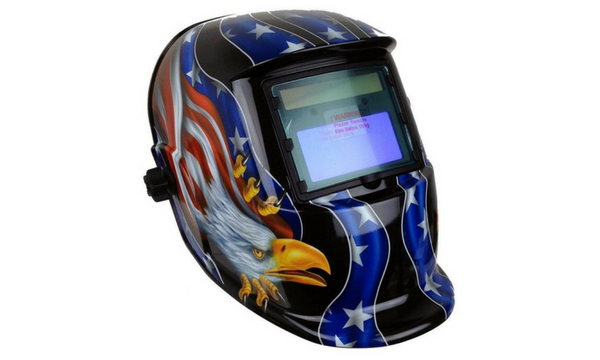
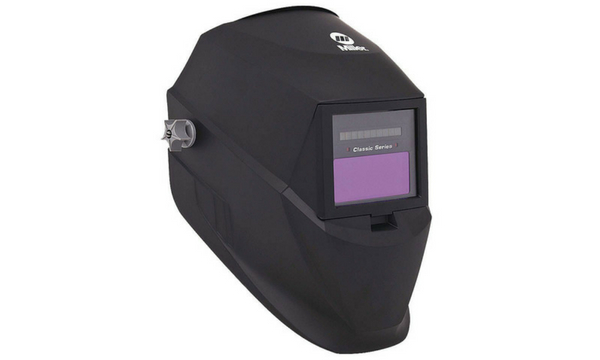
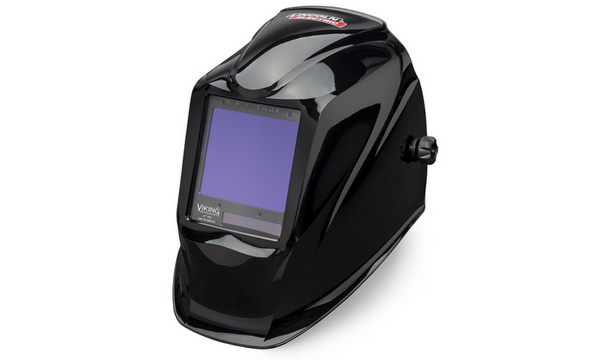
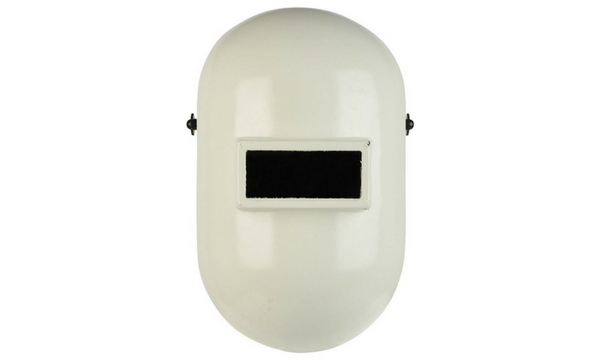
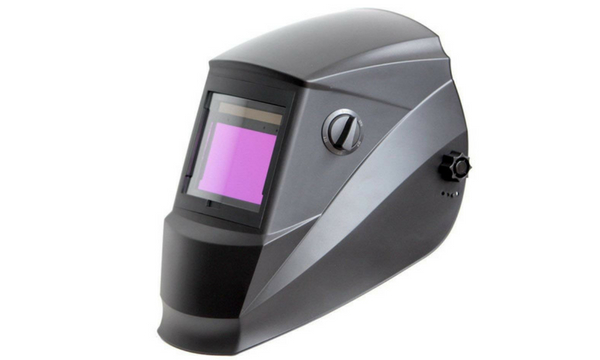
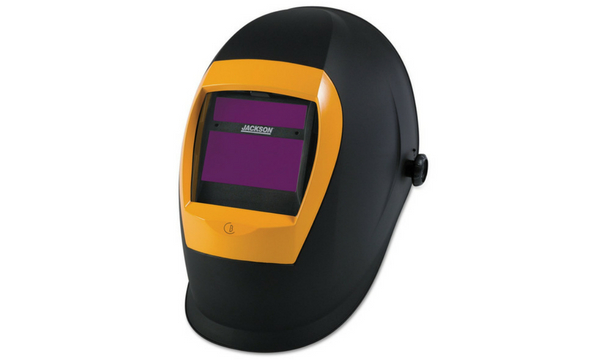
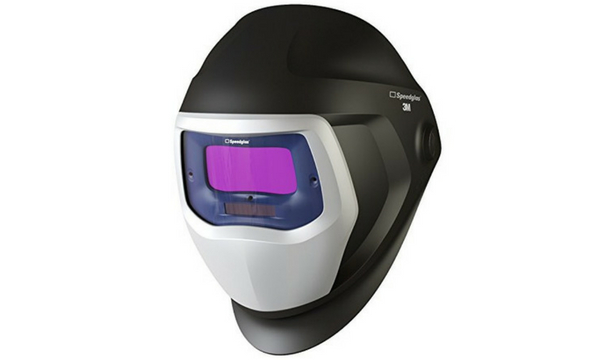
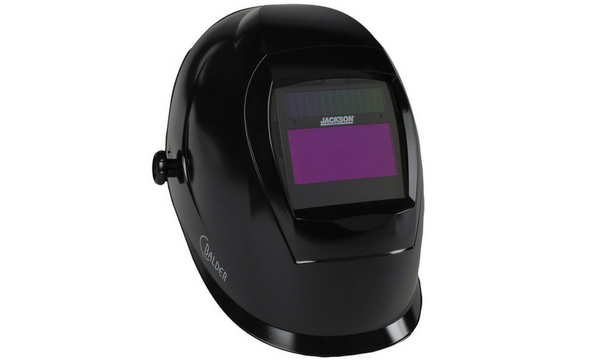
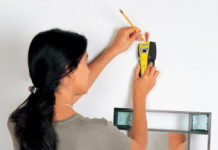
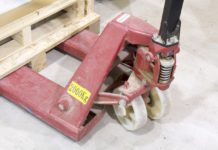

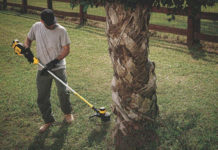







![Best Crochet Hooks for Beginners and Pros [2020 Update] best crochet books](https://www.awebtoknow.com/wp-content/uploads/2018/01/best-crochet-books-100x70.jpg)


